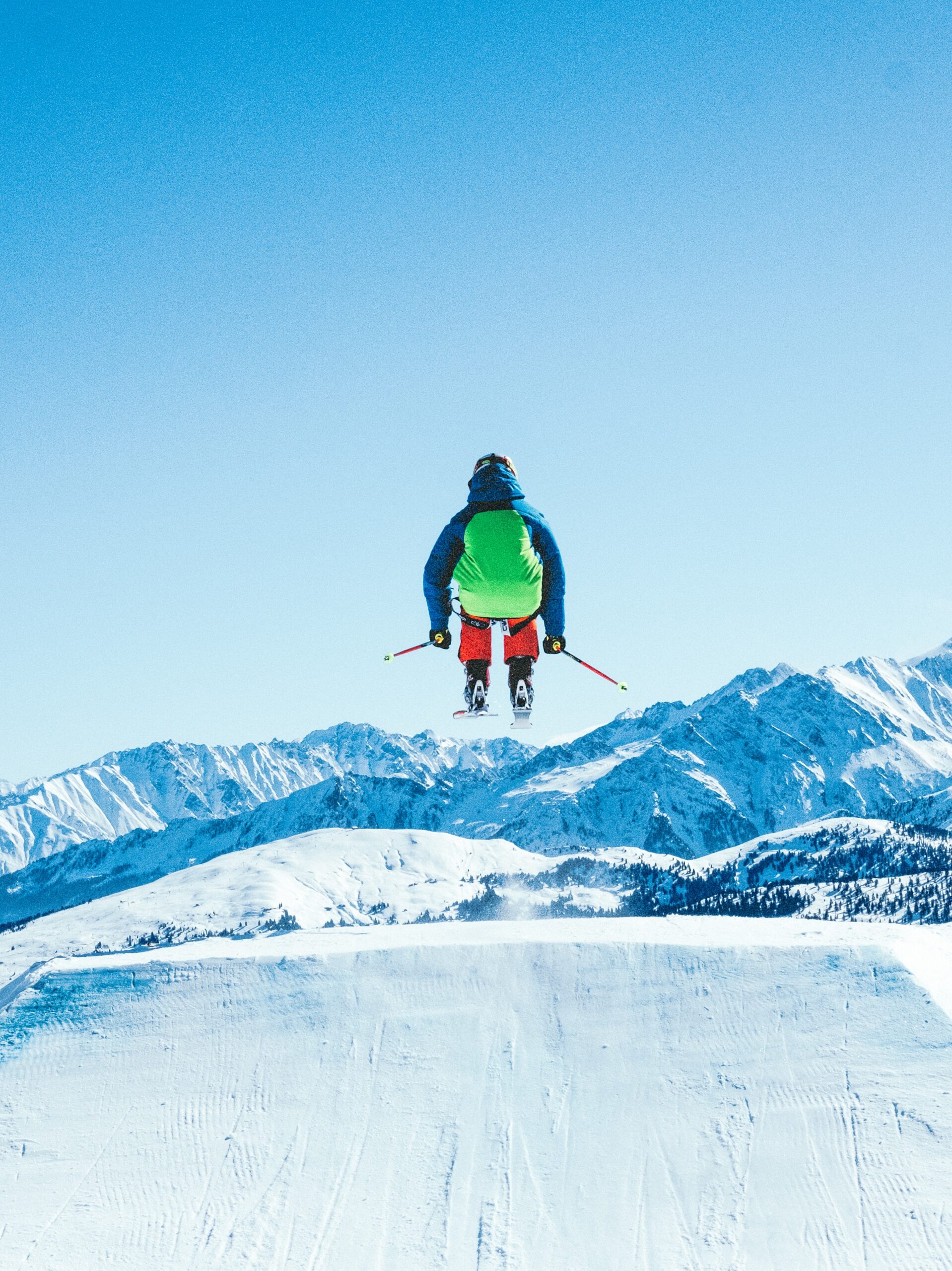WHEN the chairlifts were turned off at the start of the COVID-19 pandemic, visitation to Australia’s ski resorts was almost completely snowed under. Stays at Mt. Buller, one of Victoria’s largest ski areas, plummeted by 90% on normal figures in 2020, as it remained closed for the majority of the winter season. When Mt. Buller reopened the following year, visitation was down by 70%, with most Melbournians under lockdown, and not allowed to visit for most of the season. Looking ahead to post-COVID, fears grew that skiing’s base may have grown too old, and the sport too expensive, to return to where it once was.
The following year however – Mt. Buller’s most recent ski season – was a completely different story, as the sector carved its way back to normalcy – and beyond.
“The 2022 season saw an uptick in recovery with record visitation as well as a record snow depth for the start of the season, and was a much-needed shot in the arm for resort businesses needing to recoup two years of accumulated losses,” a Mt. Buller spokesperson told travelBulletin.
“This positive trend is continuing with strong pre-season bookings coming in for this snow season.”
Vail Resorts, which owns a number of Australian ski areas, such as Falls Creek Alpine Resort, Mt. Hotham, and Perisher Ski Resort, is also witnessing a demand surge for its sport. In fact, Vail thinks skiing may be as popular as ever.
“We were thrilled with visitation at Perisher, Falls Creek and Hotham during the 2022 snow season and saw a healthy mix of skiers and snowboarders across all ability levels as they returned to our mountains after two years of limited operations and other challenges all related to the global pandemic,” Vail Sales & Marketing Director Robert Lloyd told tB. “It was wonderful to see our mountains return to a more ‘normal’ state, which is also important for the ongoing success of our mountain communities.”

Fortunately, the story is much the same around the country, Australian Ski Areas Association (ASAA) Chief Executive Officer Colin Hackworth told tB. “The ski industry has recovered very quickly indeed, which is a great relief to all businesses operating in the sector,” he said. “If we cast our minds back, COVID came hot on the heels of those horrible bushfires, so it is only now that businesses are enjoying some level of recovery.”
“Skier visitation to the resorts in 2022 was a record, beating pre-pandemic best-ever visitation by around 10%.”
The trend is being noticed by travel agencies also. David Withers is the Managing Director of Traveplan, which is a major supplier of skiers to Aspen – in some years, the world’s largest. Travelplan’s bookings for the 2022/23 Northern Hemisphere winter started off with a bang, and by May, the company was well ahead of the pre-COVID season of 2019/20, Withers told tB.
Brisbane-based Sno’n’Ski is also on par with 2019 levels, with National Sales Manager Emily Porter telling tB high-end demand is particularly high. “TTV is also high, but pax numbers are not quite at 2019 levels yet, so TTV has been propped up by the high-end,” she added. Porter predicts the heavy lifting done by the high-end of the ski market will continue, as a problem which is plaguing almost all sectors of the travel industry – air capacity and airfares – is not discriminating against the ski sector either.
“If there were cheaper airfares, we would be sending more and more passengers, because at the moment, those high-end clients can afford the high airfares, where it’s restricting that three-star market”. More cost-conscious skiers are instead shifting toward cheaper destinations, such as Japan and New Zealand, while luxury customers book the United States and Canada, Porter added.

Almost as important as booking in ski enthusiasts for their annual trip to the slopes is encouraging new participants to take up the sport. Although the ASAA does not make such statistics public, the United States’ National Ski Areas Association’s data shows a number of seasons in a row in which the median age of skiers (35) increased. Also concerning is that millennials do not hit the slopes as often, nor for as long, as baby boomers do – meaning the younger generation is both less numerous and less valuable to the ski sector than their older counterparts.
The good news for Australia is our market is unique, Hackworth said. With its strong levels of immigration, the country has developed it has its own “emerging market” of skiers, who are showing a fascination for snowsports, and have taken up a gnarly enthusiasm for the sport.
Mt. Buller is capitalising on this, with the resort saying it has become one of the chief destinations for those wishing to see snow for the first time.
“The resort is seeing a clear pattern of new migrants embracing the special experience of snow in Australia and quickly moving from a first-time visit for snow play to progressing into skiing and snowboarding on return and longer visits,” it said.
Meanwhile, Travelplan’s strategy focuses on multi-generational ski families, who pass on the sport from one cohort to the next, like a treasured family heirloom. “We have seen the children of the early families come back to international skiing with their own families, and they bring all their friends, and school friends,” Withers said. “We are already seeing the next generation starting as well.”

Mt. Buller is also attempting to turn less-valuable day-trippers into more desirable, longer-stay visitors, focusing on promoting a range of experiences. Activities on offer at Mt. Buller focus on diverse and entry-level experiences, such as tobogganing, snow play, beginner ski and snowboard lesson, sled dog tours, and guided snowshoe walks, all of which are popular with families and longer-stay visitors. The overarching goal is to turn brief a “ski trip” into a long “snow holiday”.
“Snowsports are activities that new skiers and snowboarders are very often introduced to by friends and family, so the multigenerational and referral networks are a big part of bringing in new skiers,” Mt. Buller said. “Offers such as Kids Stay Free and value periods encourage new skiers to try the sport during early and late season when they can avoid peak period pricing.”

The elephant in the room – or in this case, on the trail – that no-one in the ski industry will be able to deal with in totality is climate change. Fears are that as the planet warms, lower-altitude resorts, such as those common in Australia, will see their season lengths shrink. This year, Europe suffered a drought of early snow up until the holidays, which saw the season start later than typical – an increasingly more common problem.
Withers says this is why he encourages his travellers to choose higher-altitude resorts, especially when skiing closer to the start of the season, when natural snowfall is less predictable. “Our clients generally choose the higher altitude resorts, so there seems little change to the season dates of the top resorts,” he added.
Meanwhile ASAA’s Hackworth rubbished suggestions season lengths will eventually reduce to an extent which is unprofitable. “Australia has always had highly variable levels of natural snowfall…for that reason, all resorts have made significant investments in snowmaking, which has served to increase the number of operational days,” he said.
“There are no resorts in Australia with snowmaking installed that are suffering shorter seasons. The operating season is now highly predictable, highly reliable, and longer than ever before.”
Mt Buller traditionally starts making snow in April, well ahead of the opening of the winter season, and has refined specialist skills in stockpiling and supplying snow. The resort has almost 300 snowmaking guns to add snow cover to most of its major ski runs, buttressed by four SnowFactories to boost cover where needed. Once the snow has been made, the grooming team meticulously ensures the snow is protected and preserved to last as long as possible. “The Snow Factories can make snow at any temperature has been a game-changer in guaranteeing snow for events and activities,” Mt. Buller added.

Stocking up on snow guns is not the only way ski resorts are preparing for a more unpredictable climate. In fact, the way the industry has combatted its high reliance on seasonality is by eliminating that reliance altogether.
Many resorts are now building out their “green season” program – named so as it is the time of year during which grass, not snow, dominates the landscape. Hiking and mountain biking are now popular at a number of ski areas in Australia during the summer, such as Thredbo, Lake Mountain Alpine Resort, and Falls Creek. Mt. Buller has just invested more than $1 million into its dedicated facilities, and is also developing a new ‘Via Ferrata’ climbing experience along the rock faces at its summit, which will be aimed at both experienced and new climbers. Zipline and treetop adventures are also in development, and the resort is even now home to rally races.
While smaller, independent ski resorts combat the effects of climate change through product diversification, New York Stock Exchange-listed Vail is also combatting the phenomenon in the boardroom. Vail’s Epic Pass, which admits skiers to not just its Australian resorts, but dozens of its global ski areas, has become the company’s killer competitive move against both climate change and its adversaries. The Epic Pass offers skiers variety and flexibility at a price which is not dissimilar to a season pass at a single resort. Meanwhile, Vail is able to bank a higher portion of lift revenue in advance of the season, which reduces the impact of climate variability. So important is the Epic Pass to Vail’s business, it is described as “central to the stability of our business”. “For the guest experience, advanced commitment allows us to…make substantial investments in snowmaking technology, which all our Australian Resorts are focused on with long-term investment strategies,” Perisher Vice President & General Manager Belinda Trembath told tB.

Not a part of the Vail conglomerate, Mt. Buller said its family ownership matters to many people within its community. The resort is proud of its different approach and operating style, which was most stark during the COVID-19 pandemic, when it retained its staff and operated “more days for our guests, the community, and businesses than any other resort in the state,” it said.
“Mt Buller committed to stay open for regional guests and to give surrounding businesses a chance to operate, rolling lifts for 45 days in 2020 compared to just four days for the other major resorts”.
There is more the sector can be doing to remain competitive though, Sno’n’Ski’s Porter says. Although the cost of a season pass may be less the in years prior, the full “ski holiday” which is now being marketed is getting more expensive. Porter believes lesson prices are making it prohibitive for some families to take up the sport. “They haven’t even released [lesson] rates yet for this coming winter,” she said. “Although the accommodation books out a long time in advance, your first-time skier family can’t book their entire package in advance with all of those known quantities like they want to.
“As we know with the first time for any kind of trip, they want to book the whole package, they want to know they have an expectation of their full package costs before they commit to it,” Porter added, suggesting that although the ski sector has managed to slalom around the many forces working against it – waning numbers, COVID-19, and the Earth’s climate – the industry has not reached fresh powder just yet.







